Ubiquitously Uzbekistan – The Sitorai Mokhi Khosa, Where Russian Modernity Clashes with Uzbek Antiquity
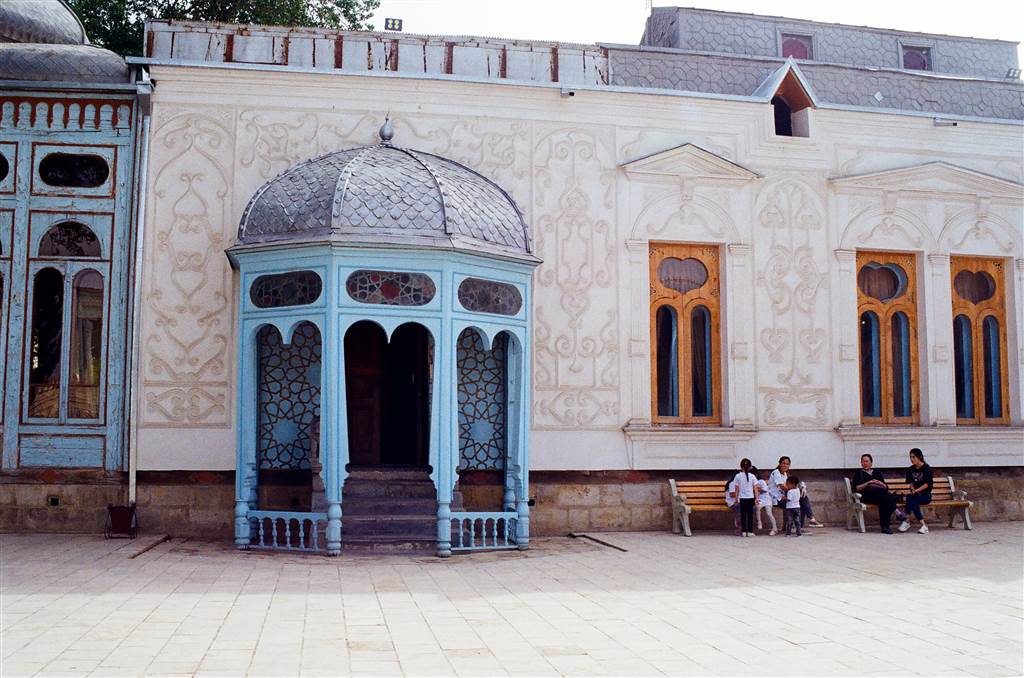
The Sitorai Mokhi Khosa is the summer palace for the last Bukhara Emir, Alim Khan. At the time of the summer palace’s construction, Russian domination, be it as the expression of Russian imperialism or as the Bolshevik ambition that followed, has reached this part of Central Asia.
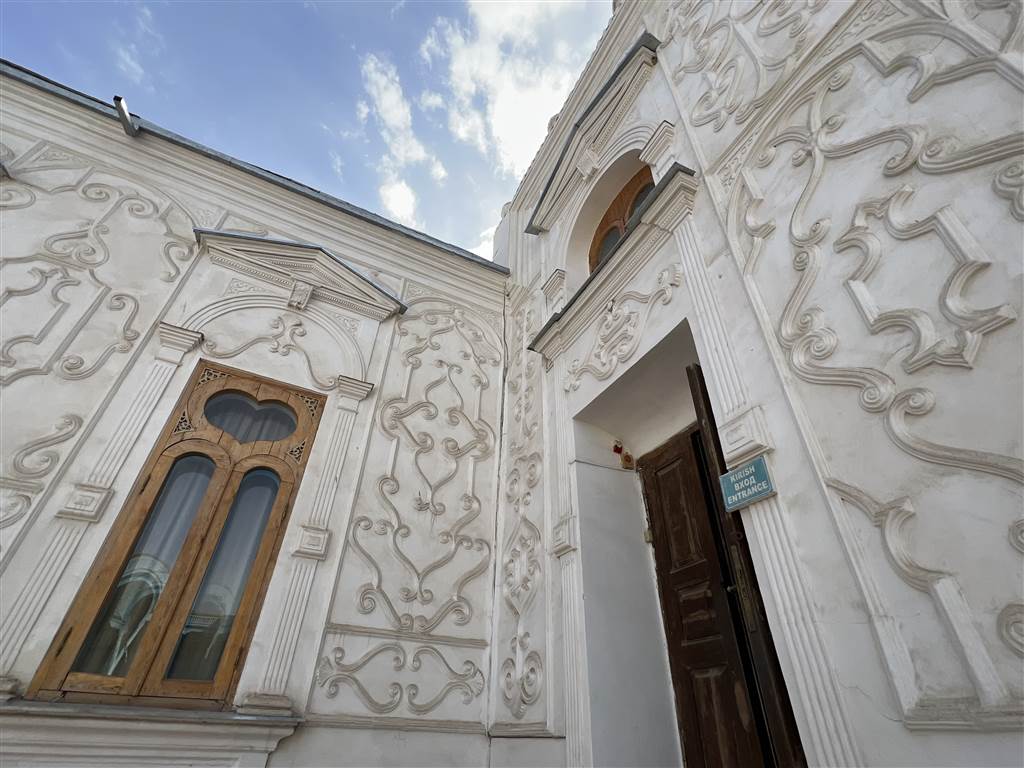
The History of the Russian Invasion of Bukhara
The Russian invasion and exertion of power over Uzbekistan took place in the mid-19th century. In 1865, the Russian Empire had already taken Tashkent and made it the capital of Russian Turkestan. At the cusp of Russia’s invasion of Bukhara, which took place in that same period, the various regions of Uzbekistan were ruled by khanate kingdoms. This part of Uzbek history was known as the Khanate era.
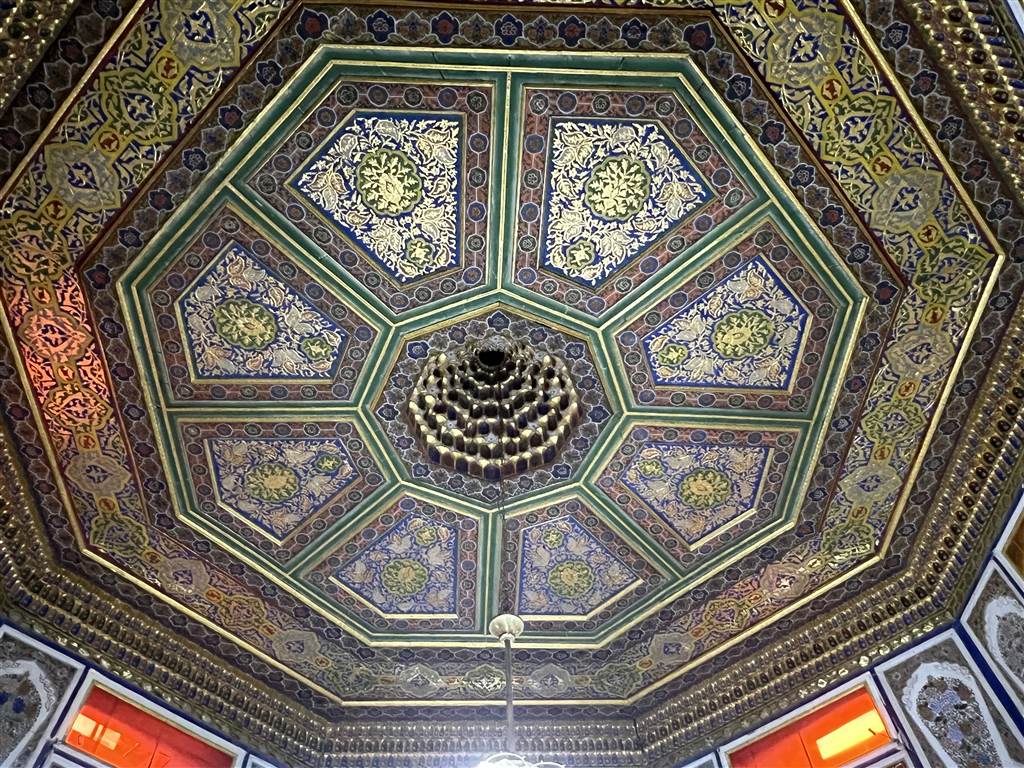
Photo: The octagonal room (Khonkhona) is beautifully painted. On the wall and ceiling were made “kundal” patterns of real gold and silver.
Throughout the 1860s or so, the Russians have waged their wars in Bukhara, and in 1866, the Bukharans were defeated. In 1868, the Emir accepted vassal status after the defeat in the Battle of Zerabulak. It was at that time that the Emir ceded Samarkand to the Russians as well. However, Khiva remained in the Emir’s control.
At this point, it could not be said that the Russians were ruling Bukhara yet. Rather, the Emir still retained power in the administration and control of Bukhara and other territories. Bukhara was yet to be incorporated into the Russian Empire formally.
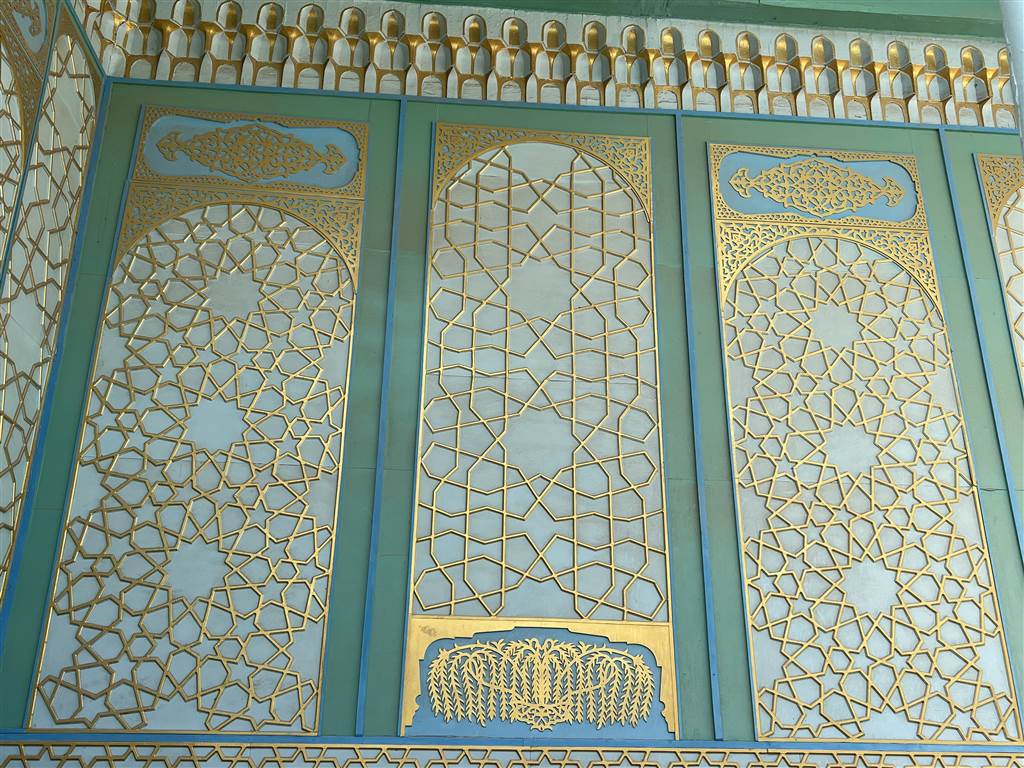
The History of the Sitorai Mokhi Khosa
Built in 1911, the Sitorai Mokhi Khosa stands testament to a watershed in Bukharan and Uzbek history. Its name meaning “Palace Like the Stars and the Moon,” the Sitorai Mokhi Khosa was built by Russian engineers for Emir Alim Khan in 1911, “as an inducement to get him out of the Ark fortress and safely ensconced in a strategic and cultural no-man’s land on the edge of town.” (Calum Macleod) The Sitorai Mokhi Khosa is located about 4km north of Bukhara on the edge of the road to Samarkand.
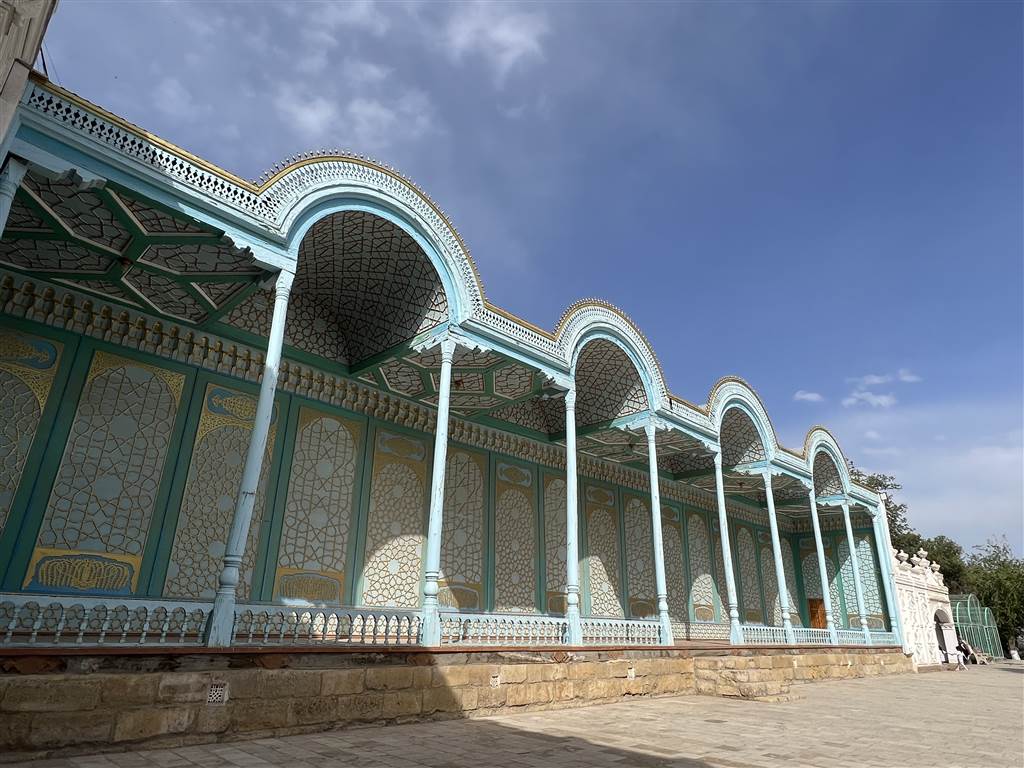
The architecture shows prominent and grandiose eastern European features. At first glance, it certainly conveys the sense of luxury to which the royalty of Bukhara felt entitled.
According to the descriptions on site, the exterior of the Sitorai Mokhi Khosa was that of Russian architecture, but the interiors were fitted with traditional Bukharan elements. Without proper training in the antique architecture of Bukhara, I felt like I was looking at wholly European designs.
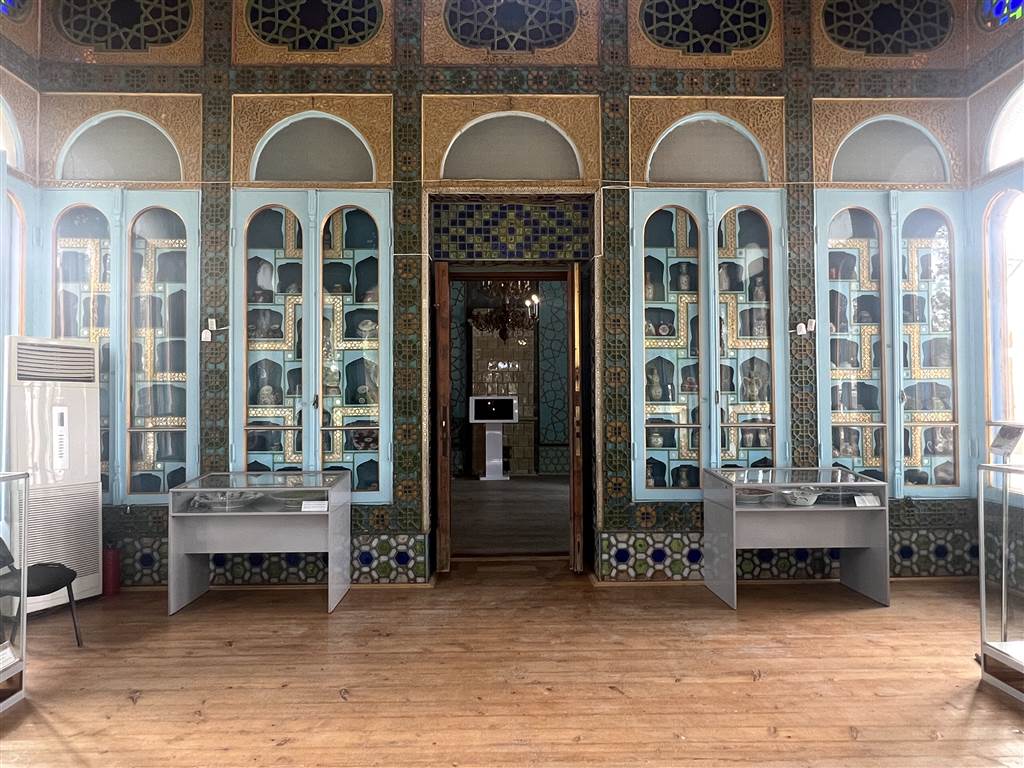
The summer palace’s unique fusion architecture represents the historic crossroads at which the Bukhara emirate confronted. It was a time when Russian modernity was clashing with Bukharan antiquity and threatened its survival. As such, the Sitorai Mokhi Khosa’s beautiful appearance belies the unfortunate historical context from which it arises.
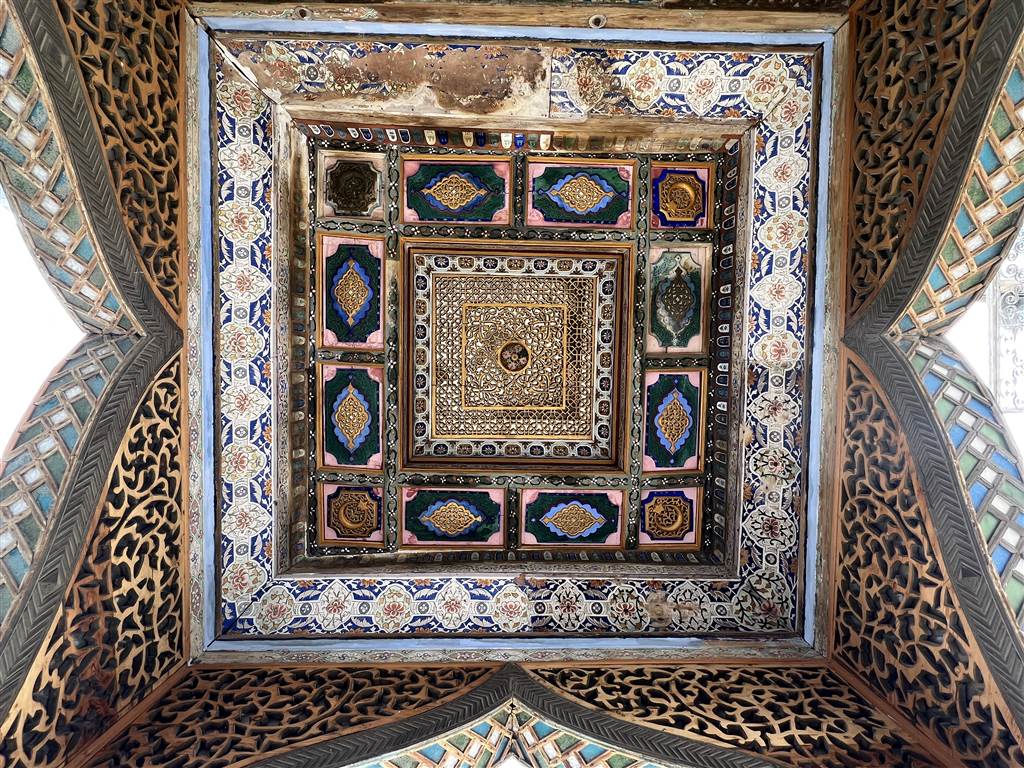
The Soviet troops would eventually launch attacks upon Bukhara in 1920, causing significant casualties to both the people and heritage of Bukhara, and that certainly included the Ark. It was from this summer palace that the last Emir Alim Khan fled to Afghanistan. It was also in the inner courtyard of the Sitorai Mokhi Khosa that the First Congress of the Bukharan Soviet convened in 1920, whereby the People’s Republic of Bukhara was proclaimed.
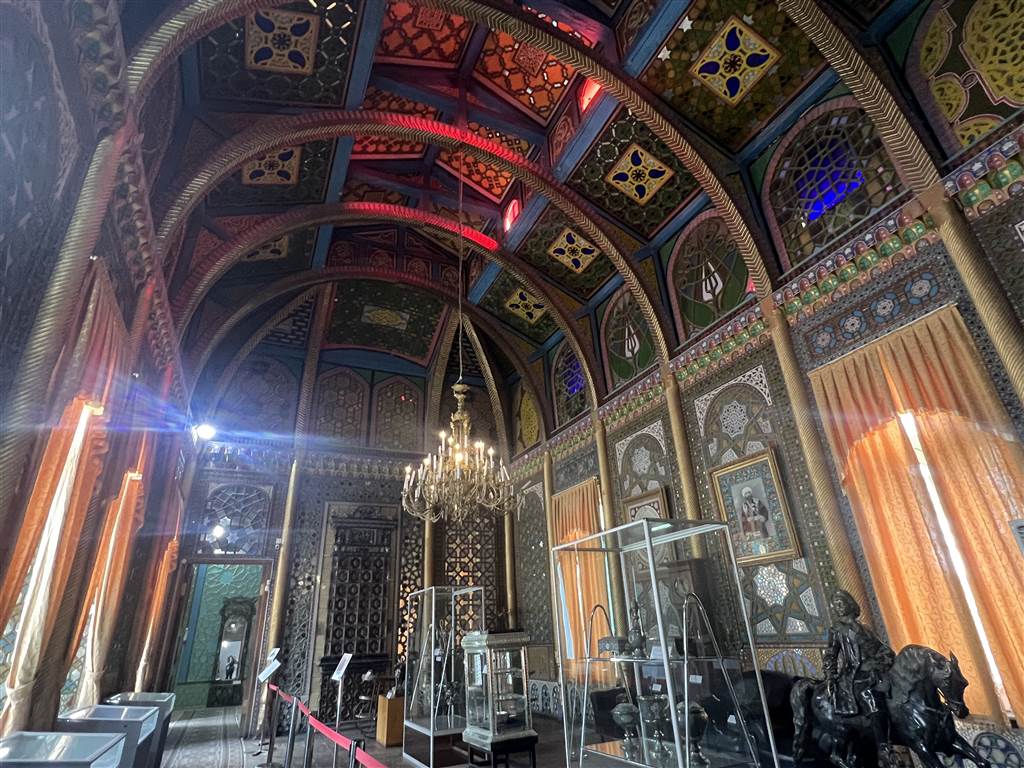
Photo: This is the Most-Photographed Chamber in the Sitorai Mokhi Khosa
A Tour of Sitorai Mokhi Khosa
The Inner Courtyard and the Three Surrounding Structures
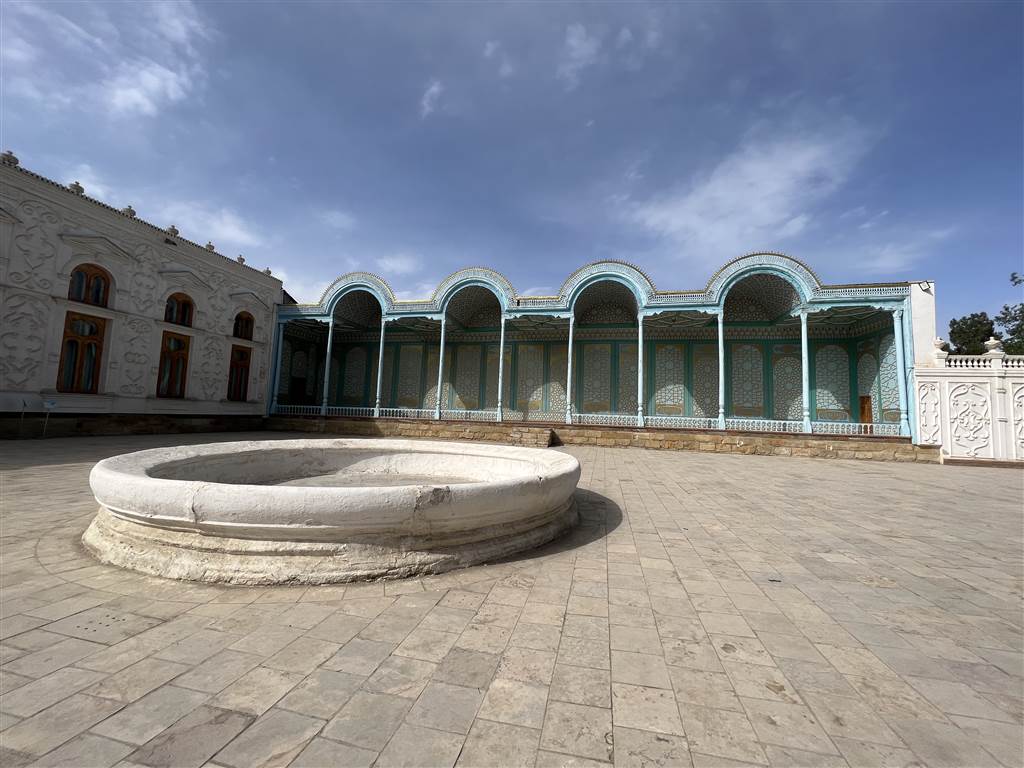
Photo: Three Distinct Structures Surround the Three Sides of the Inner Courtyard
Three distinct but connected structures surround the inner courtyard (Hauli Darun). On the west side stands the White Hall (khonai Safed). On the south side stands the glass terrace Teahouse with a banquet hall. On the north side stands the Chess Room.
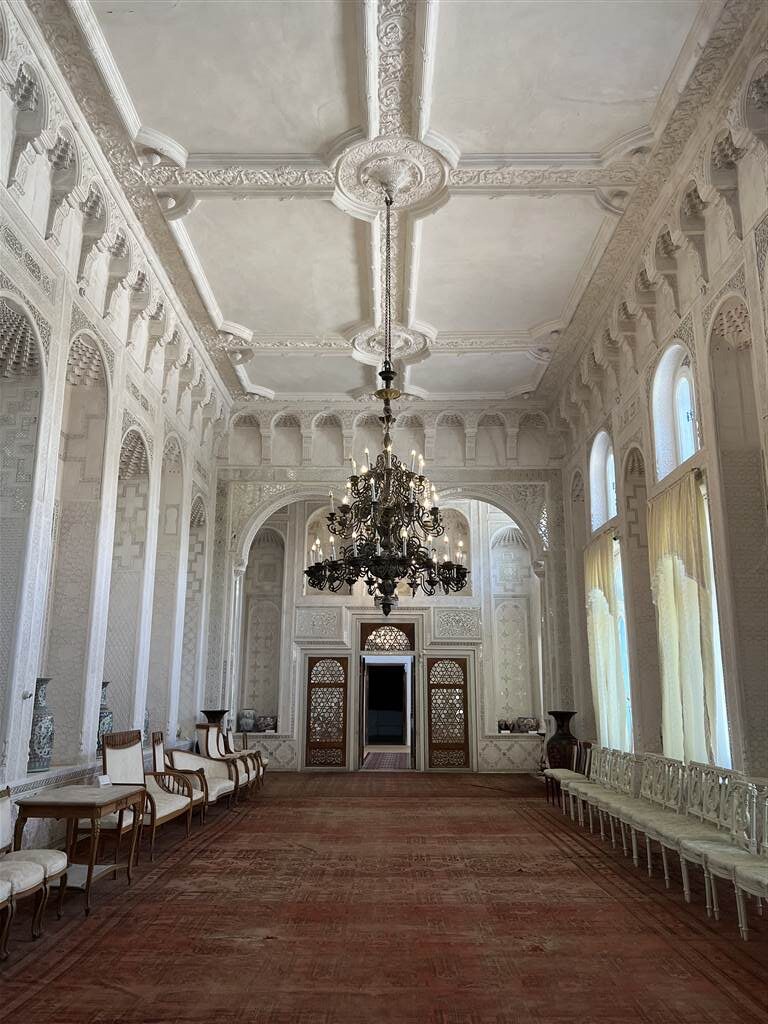
In my humble opinion, in terms of aesthetics, the interiors of the Sitorai Mokhi Khosa is a notch better than the purely Russian-styled architecture of the buildings’ exterior. The myriad colors that adorn hand-carved stalactite ceilings are exceptionally beautiful.

It is said that the elaborate chandeliers hanging from the ceilings are original.
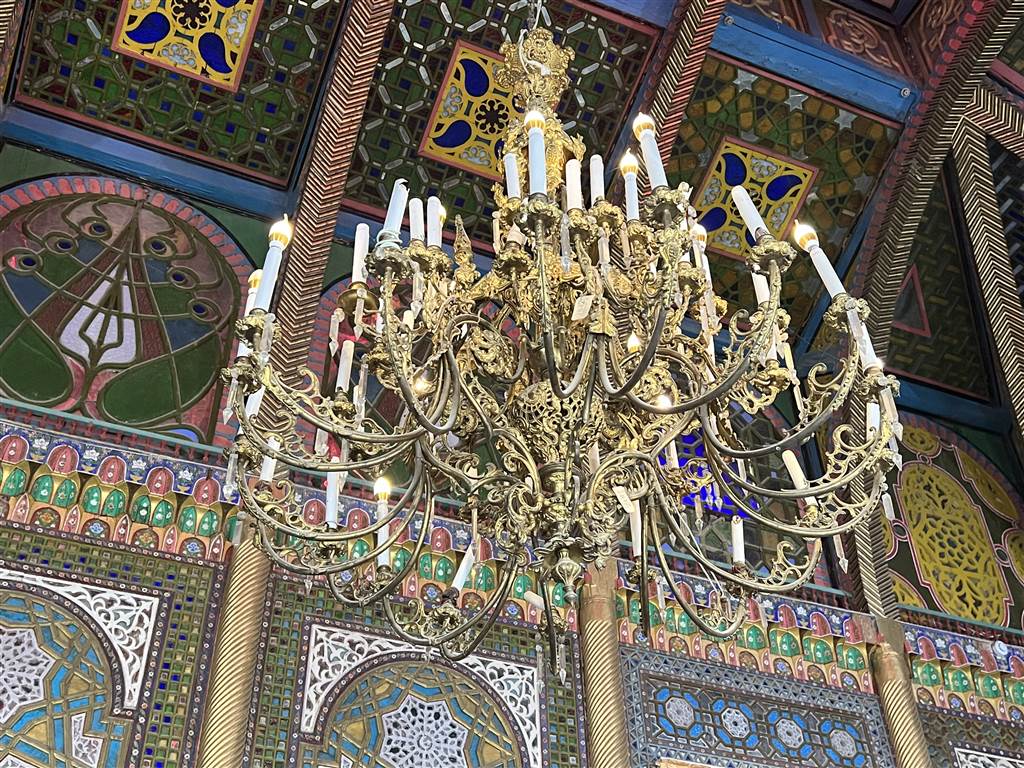
In terms of exhibitions, the items displayed in this part of the Sitorai Mokhi Khosa tend to show the high life of Bukhara, with a collection of porcelain instruments, the clothes worn by the privileged, and antique furniture.
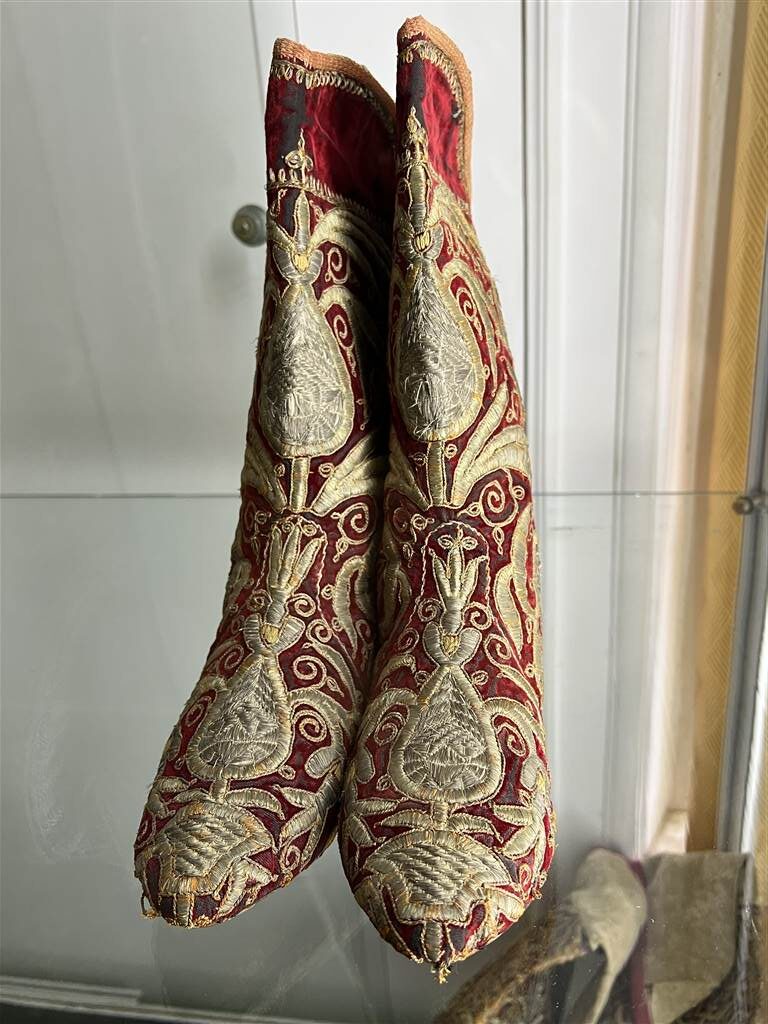
The Pond, The Harem and the Folly
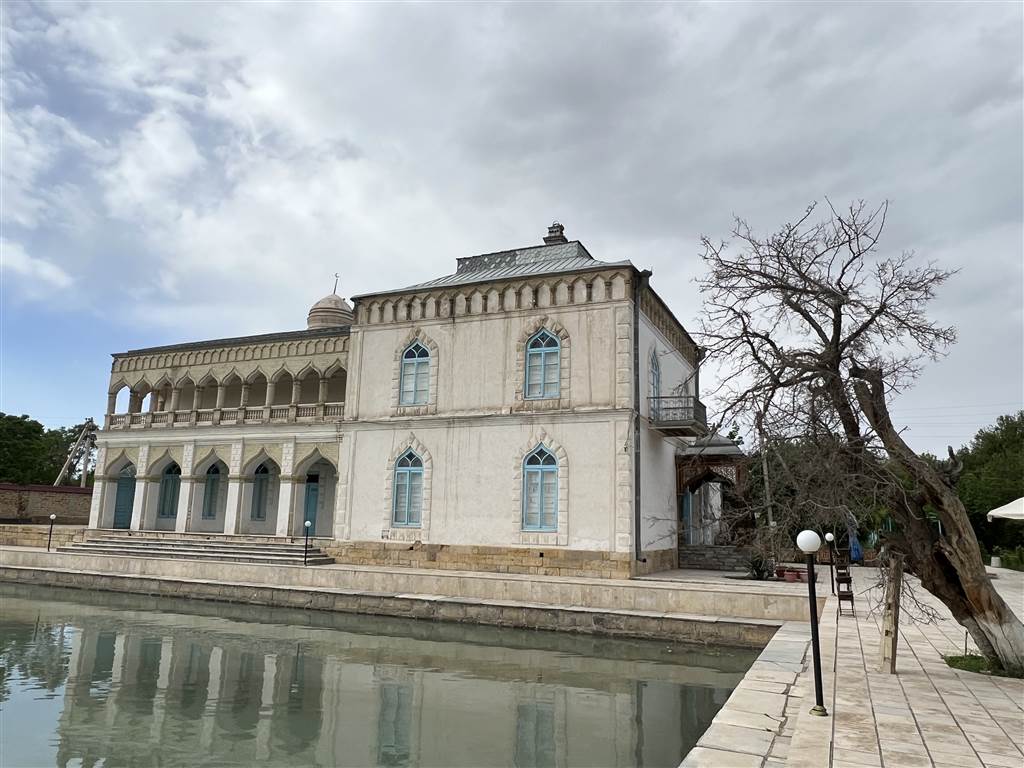
Perhaps the most interesting history in this part of the summer palace is the folly. It is a pair of wooden towers linked by a bridge.

According to Sophie Ibbotson, “the emir used to select his companion for the night by throwing her an apple. The girl had to catch it and then take a bath in donkey’s milk before being permitted to enter the royal bedchamber.”
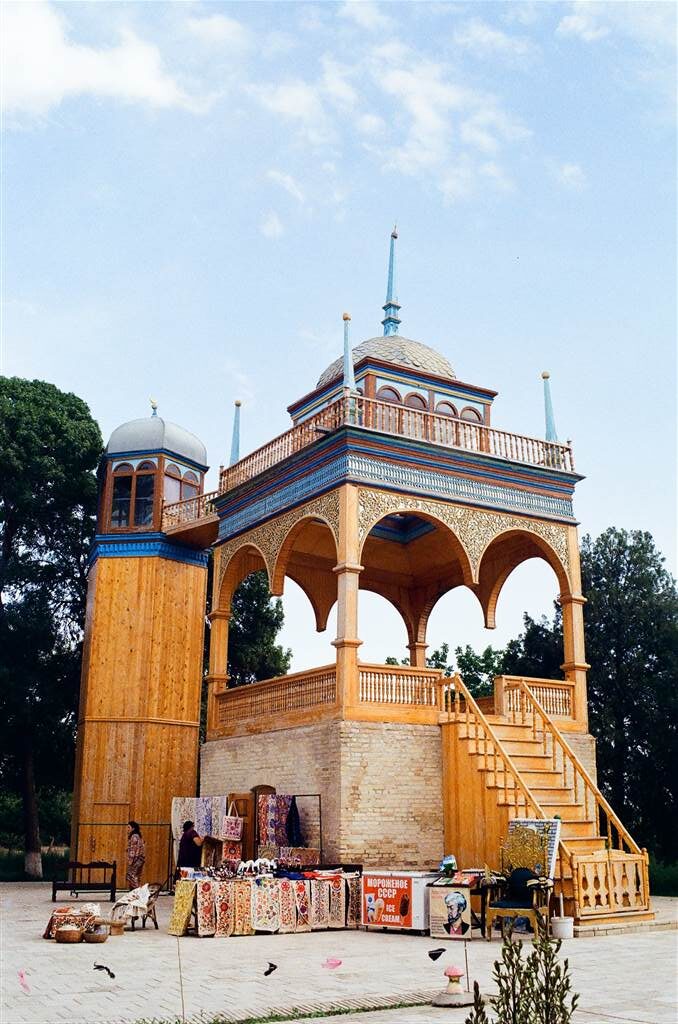
The Sitorai Mokhi Khosa harem now houses the Museum of Applied Arts.
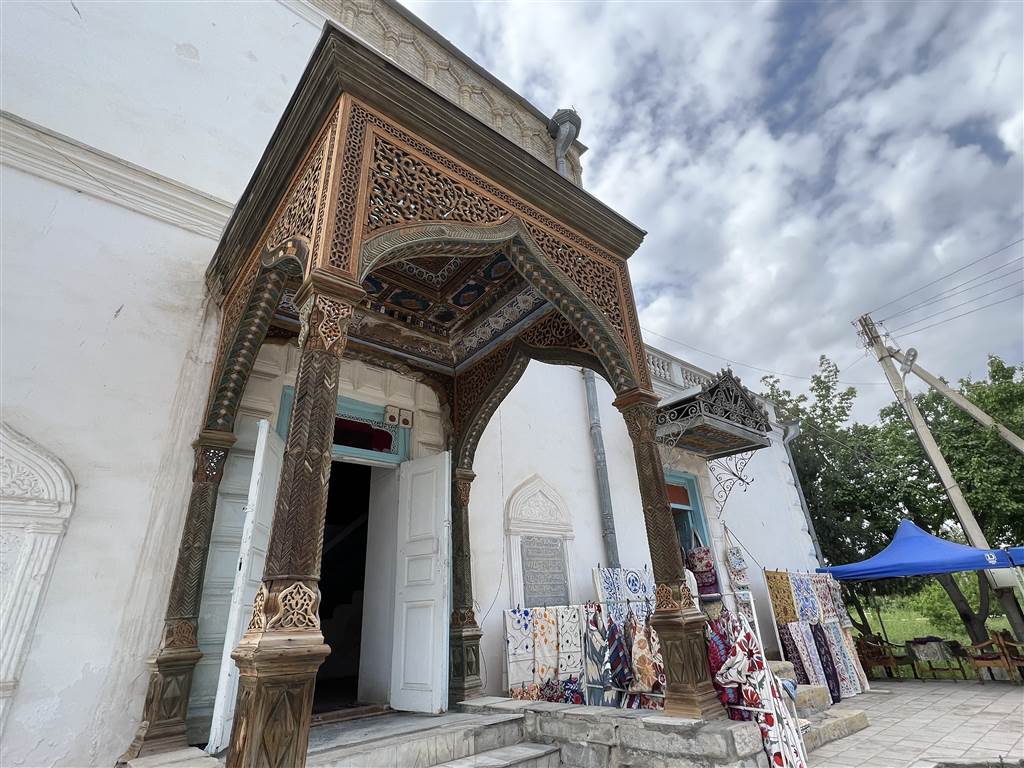
I found the hand-woven and hand-embroidered fabrics there to be very beautiful. They were the work of renowned national artists in Uzbekistan. The exhibits in the museum represents the Bukhara school of embroidery during the 19th and 20th centuries.
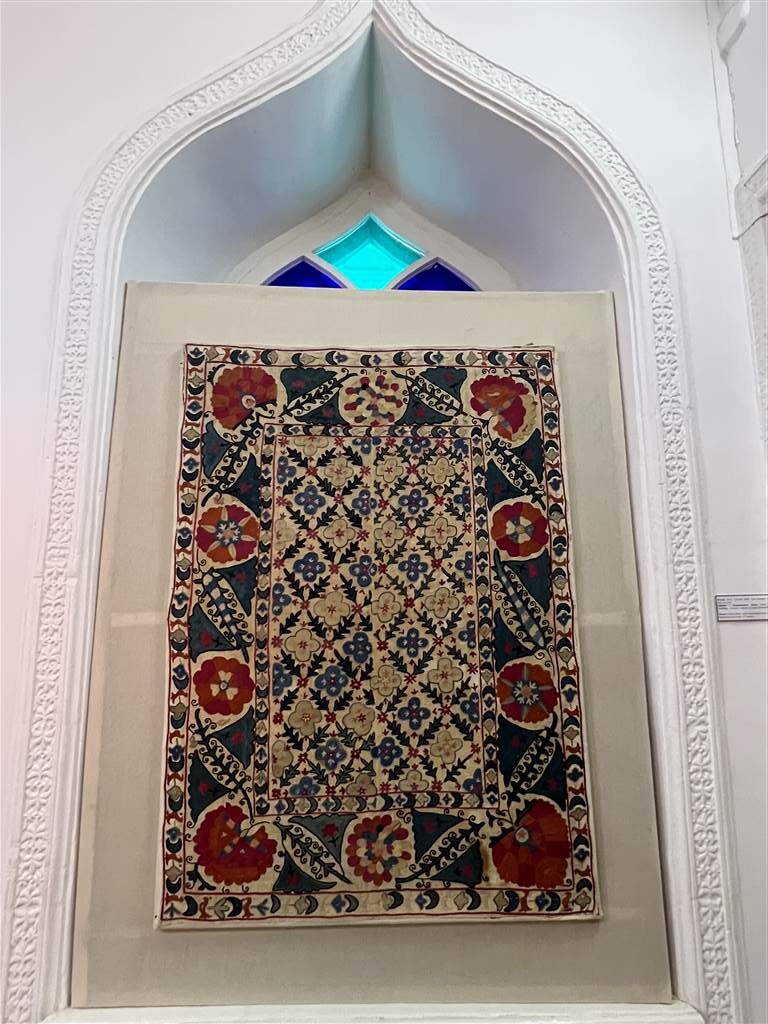
From Bukhara we took a taxi to the Sitorai Mokhi Khosa. Be prepared to spend an hour or two there.
Sources
Descriptions on site at the Sitorai Mokhi Khosa.
Sophie Ibbotson, Uzbekistan, Bradt Travel Guide (2020).
Calum Macleod, Uzbekistan: the Golden Road to Samarkand (2014).
The Wikipedia on the Russian Conquest of Bukhara.
